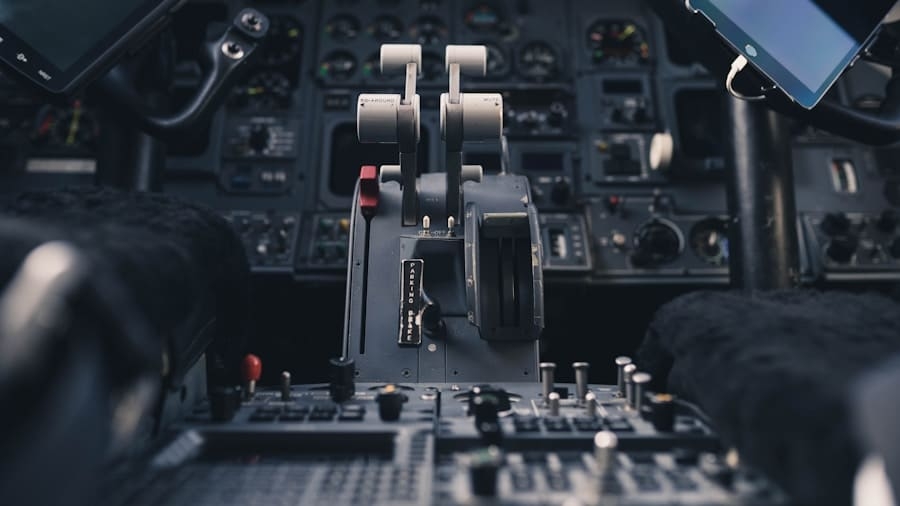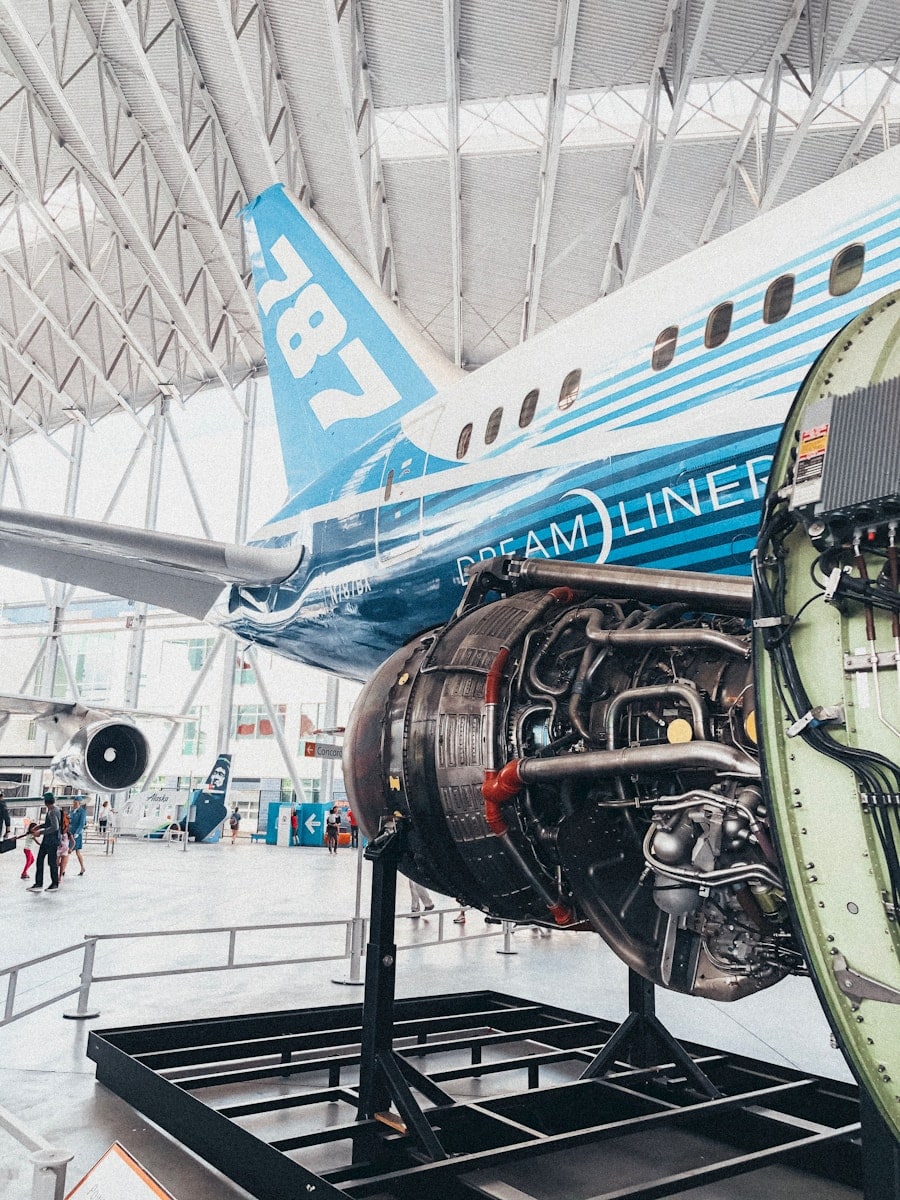The aerospace industry, characterized by its intricate networks and reliance on advanced technologies, faces a growing array of cyber threats that can jeopardize both operational integrity and passenger safety. As the sector increasingly integrates digital systems for communication, navigation, and control, the potential for cyberattacks has escalated dramatically. In this context, artificial intelligence (AI) has emerged as a transformative force in cybersecurity, offering innovative solutions to detect, prevent, and respond to cyber threats in real-time.
The convergence of AI and cybersecurity is not merely a trend; it represents a paradigm shift in how aerospace networks can safeguard their critical assets against evolving threats. AI-powered cybersecurity leverages machine learning algorithms, data analytics, and automated response mechanisms to enhance the security posture of aerospace networks. By analyzing vast amounts of data generated by various systems, AI can identify patterns indicative of malicious activity, enabling proactive measures to thwart potential breaches.
This capability is particularly vital in an industry where the stakes are exceptionally high, and the consequences of a cyber incident can be catastrophic. As we delve deeper into the role of AI in this domain, it becomes evident that its integration is not just beneficial but essential for the future resilience of aerospace networks.
Key Takeaways
- AI-powered cybersecurity is revolutionizing the aerospace industry by providing advanced threat detection and prevention capabilities.
- Artificial intelligence plays a crucial role in identifying and mitigating cyber threats in aerospace networks, offering real-time analysis and response.
- The advantages of AI-powered cybersecurity in aerospace networks include enhanced threat detection, rapid response times, and reduced human error.
- Challenges and limitations of AI-powered cybersecurity in aerospace networks include the need for continuous training and updates, as well as potential vulnerabilities to adversarial attacks.
- Successful case studies demonstrate the effectiveness of AI-powered cybersecurity in aerospace networks, showcasing its potential for widespread adoption in the industry.
The Role of Artificial Intelligence in Detecting and Preventing Cyber Threats
Enhanced Threat Detection through Machine Learning
AI systems utilize machine learning techniques to analyze network traffic and user behavior continuously. By establishing a baseline of normal activity, these systems can detect anomalies that may indicate a cyber threat, such as unusual login attempts or unexpected data transfers.
Real-time Threat Response and Mitigation
When an anomaly is detected, the AI system can trigger alerts for cybersecurity personnel or even initiate automated responses to mitigate the threat. This capability not only enhances the speed of threat detection but also reduces the reliance on human intervention, which can be slow and prone to error.
Adaptive Security through Continuous Learning
Moreover, AI can adapt to new threats by learning from previous incidents, making it increasingly effective over time.
Advantages of AI-Powered Cybersecurity in Aerospace Networks
The advantages of implementing AI-powered cybersecurity in aerospace networks are manifold. One of the most significant benefits is the ability to process and analyze vast amounts of data at unprecedented speeds. Aerospace networks generate enormous volumes of data from various sources, including sensors on aircraft, ground control systems, and passenger management systems.
AI algorithms can sift through this data in real-time, identifying potential threats that would be impossible for human analysts to detect manually. Additionally, AI enhances predictive capabilities within cybersecurity frameworks. By employing advanced analytics and machine learning models, organizations can forecast potential vulnerabilities before they are exploited by malicious actors.
This proactive approach allows aerospace companies to implement security measures preemptively rather than reactively, significantly reducing the risk of successful cyberattacks. Furthermore, AI-driven systems can continuously learn from new data inputs, refining their threat detection capabilities and adapting to emerging cyber threats. Another advantage lies in the automation of routine cybersecurity tasks.
Many traditional cybersecurity processes are labor-intensive and time-consuming, often leading to delays in threat response. AI can automate these processes, allowing cybersecurity teams to focus on more complex issues that require human expertise. For example, AI can handle tasks such as log analysis, incident response coordination, and vulnerability assessments autonomously.
This not only improves efficiency but also enhances the overall security posture of aerospace networks.
Challenges and Limitations of AI-Powered Cybersecurity in Aerospace Networks
Despite its numerous advantages, the integration of AI-powered cybersecurity in aerospace networks is not without challenges and limitations.
While machine learning algorithms are designed to identify anomalies, they may also flag benign activities as threats due to their sensitivity.
This can lead to unnecessary alerts and resource allocation towards investigating non-issues, ultimately straining cybersecurity teams. Moreover, the reliance on historical data for training AI models poses another challenge. If the training data is not comprehensive or representative of current threat landscapes, the AI system may fail to recognize new types of attacks or adapt to evolving tactics employed by cybercriminals.
This limitation underscores the importance of continuous updates and retraining of AI models to ensure their effectiveness in real-world scenarios. Additionally, there are concerns regarding the transparency and interpretability of AI decision-making processes. Many machine learning algorithms operate as “black boxes,” making it difficult for cybersecurity professionals to understand how specific decisions were made.
This lack of transparency can hinder trust in AI systems and complicate incident response efforts when human intervention is required. Addressing these challenges is crucial for maximizing the effectiveness of AI-powered cybersecurity solutions in aerospace networks.
Case Studies: Successful Implementation of AI-Powered Cybersecurity in Aerospace Networks
Several aerospace organizations have successfully implemented AI-powered cybersecurity solutions to enhance their defenses against cyber threats. One notable example is Boeing’s use of machine learning algorithms to monitor its supply chain networks for potential vulnerabilities. By analyzing data from suppliers and partners, Boeing’s AI system can identify unusual patterns that may indicate a cyber threat or breach attempt.
This proactive approach has allowed Boeing to strengthen its supply chain security and mitigate risks associated with third-party vendors. Another case study involves Airbus’s deployment of an AI-driven cybersecurity platform designed to protect its aircraft systems from cyberattacks. The platform utilizes advanced analytics to monitor communication between aircraft and ground control systems continuously.
By detecting anomalies in real-time, Airbus can respond swiftly to potential threats before they escalate into serious incidents. This implementation not only enhances the safety of its aircraft but also reinforces passenger confidence in air travel. Furthermore, NASA has explored the use of AI in securing its aerospace networks against cyber threats.
The agency has developed machine learning models capable of analyzing telemetry data from spacecraft and ground systems to identify potential security breaches. By leveraging AI’s predictive capabilities, NASA aims to enhance its incident response strategies and ensure the integrity of its missions.
Future Trends and Developments in AI-Powered Cybersecurity for Aerospace Networks
Integrating AI with Emerging Technologies
One emerging trend is the integration of AI with other advanced technologies such as blockchain and quantum computing. Blockchain technology offers a decentralized approach to data security that could complement AI’s capabilities by providing immutable records of transactions and communications within aerospace networks. This synergy could enhance overall security by ensuring data integrity while leveraging AI’s analytical prowess.
Explainable AI for Enhanced Transparency
Another anticipated development is the increased focus on explainable AI (XAI) within cybersecurity frameworks. As concerns regarding transparency and interpretability grow, organizations will likely prioritize XAI solutions that provide insights into how decisions are made by AI systems. This shift will foster greater trust among cybersecurity professionals and facilitate more effective collaboration between human analysts and automated systems.
Collaborative Defense Strategies
Moreover, as cyber threats become more sophisticated, there will be a growing emphasis on collaborative defense strategies among aerospace organizations.
AI can play a vital role in facilitating this collaboration by aggregating data from multiple sources and providing actionable insights that benefit all stakeholders involved.
Ethical and Privacy Considerations in AI-Powered Cybersecurity for Aerospace Networks
The deployment of AI-powered cybersecurity solutions in aerospace networks raises important ethical and privacy considerations that must be addressed proactively. One primary concern revolves around data privacy; as AI systems analyze vast amounts of sensitive information—such as passenger data or operational details—there is a risk of unauthorized access or misuse of this information. Organizations must implement robust data governance frameworks that ensure compliance with privacy regulations while safeguarding sensitive information from potential breaches.
Additionally, ethical considerations surrounding algorithmic bias must be taken into account when developing AI models for cybersecurity applications. If training data reflects existing biases or inequalities, there is a risk that AI systems may inadvertently perpetuate these biases in their decision-making processes. Ensuring diversity in training datasets and employing fairness metrics during model evaluation will be essential for mitigating these risks.
Furthermore, transparency regarding the use of AI in cybersecurity practices is crucial for maintaining public trust. Aerospace organizations should communicate openly about how AI technologies are employed to protect networks while addressing any concerns related to surveillance or intrusive monitoring practices. Engaging with stakeholders—including passengers, regulatory bodies, and industry partners—will foster a collaborative approach to ethical considerations surrounding AI-powered cybersecurity.
The Impact of AI-Powered Cybersecurity on the Aerospace Industry
The integration of AI-powered cybersecurity solutions into aerospace networks represents a significant advancement in safeguarding critical infrastructure against cyber threats. By harnessing the capabilities of artificial intelligence, organizations can enhance their ability to detect and respond to potential breaches while streamlining operations through automation. However, as with any technological advancement, it is essential to navigate the associated challenges thoughtfully while prioritizing ethical considerations.
As we look toward the future, it is clear that AI will play an increasingly central role in shaping the landscape of cybersecurity within the aerospace industry. The ongoing evolution of cyber threats necessitates a proactive approach that leverages innovative technologies while fostering collaboration among stakeholders across the sector. Ultimately, the successful implementation of AI-powered cybersecurity will not only enhance operational resilience but also contribute to building trust among passengers and stakeholders alike in an era where digital security is paramount.
A related article to “How AI-Powered Cybersecurity Is Protecting Aerospace Networks” is “Discover the Best Free Software for Translation Today” which discusses the importance of utilizing technology to bridge language barriers in various industries. This article highlights the benefits of using free translation software to improve communication and collaboration among global teams. To read more about this topic, check out the article here.
FAQs
What is AI-powered cybersecurity?
AI-powered cybersecurity refers to the use of artificial intelligence and machine learning algorithms to detect and respond to cyber threats in real-time. These technologies can analyze large volumes of data to identify patterns and anomalies that may indicate a potential security breach.
How is AI-powered cybersecurity used in aerospace networks?
In aerospace networks, AI-powered cybersecurity is used to protect sensitive data and systems from cyber attacks. It can detect and respond to threats such as malware, phishing attempts, and unauthorized access, helping to ensure the security and integrity of critical aerospace infrastructure.
What are the benefits of AI-powered cybersecurity in aerospace networks?
AI-powered cybersecurity offers several benefits in aerospace networks, including improved threat detection and response capabilities, enhanced efficiency in analyzing large volumes of data, and the ability to adapt to evolving cyber threats. It can also help reduce the risk of data breaches and ensure compliance with industry regulations.
How does AI-powered cybersecurity differ from traditional cybersecurity methods?
AI-powered cybersecurity differs from traditional methods in its ability to analyze and respond to threats in real-time, without the need for human intervention. It can also identify and adapt to new and emerging threats more quickly, providing a more proactive approach to cybersecurity.
What are some examples of AI-powered cybersecurity technologies used in aerospace networks?
Examples of AI-powered cybersecurity technologies used in aerospace networks include machine learning algorithms for threat detection, behavioral analytics for identifying unusual network activity, and automated response systems for mitigating cyber threats. These technologies work together to provide a comprehensive and proactive approach to cybersecurity.



